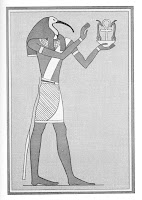The whole of life is a struggle to balance the scales of MAAT, that is the scales of Truth and Justice.
And so we come to one of two points in the year of equal day and night reflecting the great Cosmic scales. This one is known as the Libran Equinox and it occurs over the 3 days 22rd, 23th and 24th September.
This year the Libran Equinox is heavily emphasised by a tense astrological formation known as a ‘T square’. This means that 3 or more planets hold aspects between each other of 90º and 180º. In this present scenario, Pluto is in the cardinal sign of Capricorn and is 90º from Jupiter and Uranus on the cusp of Aries-Pisces and 90º from Saturn in Libra on the other side of the zodiac.
This back-ground of global tension, indicated by such a stress pattern in the heavens, is likely to be sparked off by the Full Moon occurring during the 3 days of the Equinox. A Full Moon on the Equinox doesn’t happen every year, but it does this year. Perhaps we all need to send out into the Cosmos a little prayer for equality, freedom and understanding commensurate with Libran traits; let us have peace not war; compromise not argument.
[Apologies for mistakenly putting Solstice instead of Equinox. My head was already looking at the coming Solstice of December which is also building to a point of tension]




